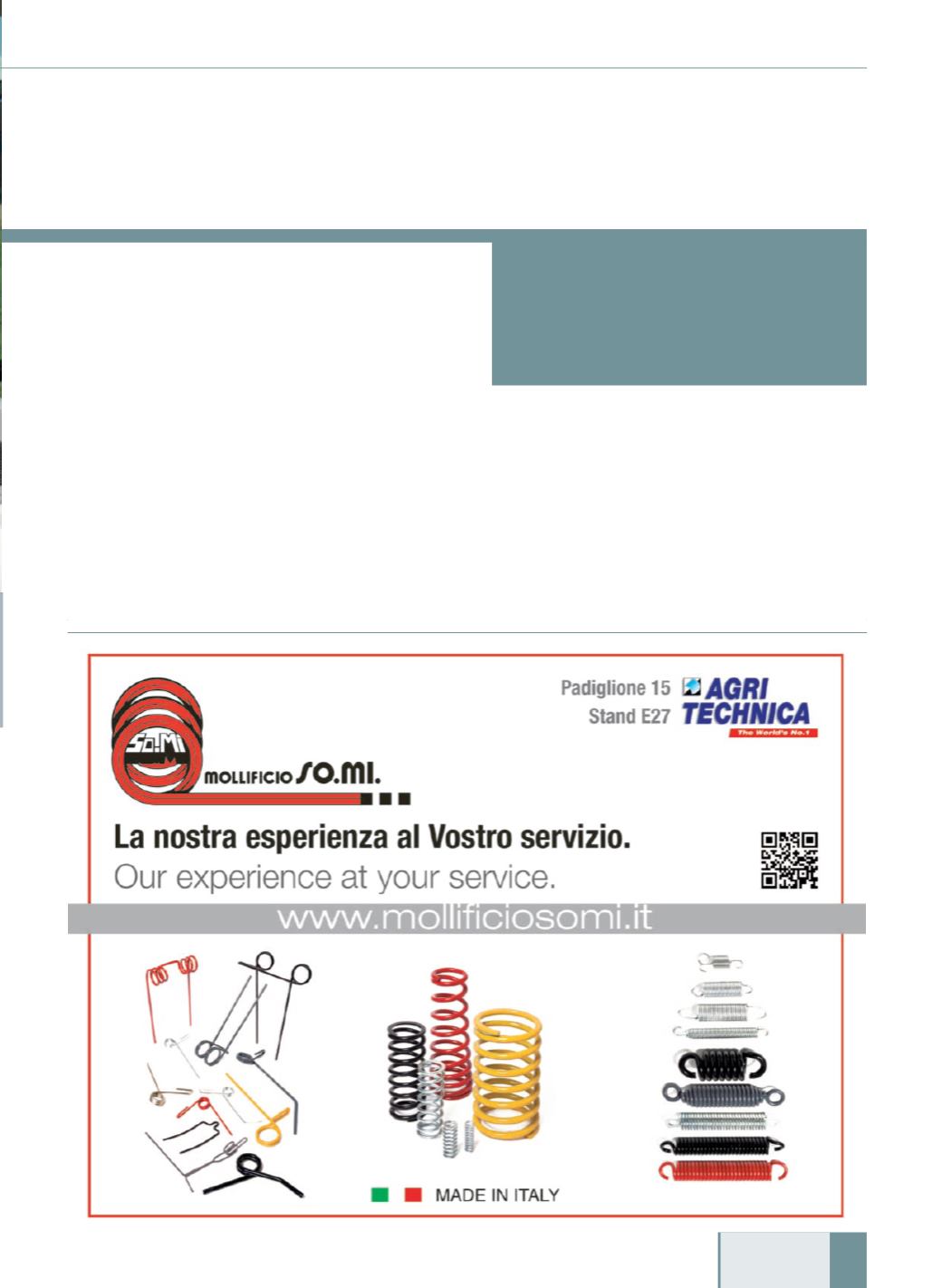
proprio considerando l’operatore, e ormai offrono un comfort para-
gonabile inmolti casi a quello delle più blasonate autovetture.
I primi trattori infatti avevano ruote in ferro, sedili in ferro (a volte
rigidi), ed erano davvero pocomaneggevoli (non esisteva il servo-
sterzo), ma si è arrivati in poco più di 100 anni a costruire mac-
chinesullequali èormai possibile far si che l’operatoresenestia
comodamente seduto in un ambiente climatizzato, sul quale agi-
scono gli pneumatici, le sospensioni proprie del trattore, quelle
della cabina, e quelle proprie del sedile per smorzare le vibrazioni
derivanti dallamarcia su terreni spesso accidentati, e per chi non
vuole nemmeno agire su un volante ormai universalmente dotato
di servosterzo c’èanche lapossibilitàdi acquistaremacchine che
grazie al GPS, in campo, sterzano da sole, ed effettuano le lavo-
razionimantenendounaprecisionenellasovrapposizione tra le va-
rie passate effettuate in campo, ben superiore rispetto a quella
che l’operatore più esperto può mantenere basandosi sui propri
sensi. Sempre basandosi sull’utilizzo di tecnologie che permetto-
no la georeferenziazione, e con l’aggiunta di mappature che per-
mettono, in base a diversi parametri, di differenziare l’entità d’in-
tervento in campo, moltemacchine “a rateo variabile” permetto-
tions causedby rugged terrain–and for anyonewho chooses
not to operate the steering wheel, they are now universally
equippedwithpower steering andalso the option of buying a
machine which, with GPS, steers itself to perform operations
whichmaintaining overlap precision for passage in the field
much superior compared to themost expert driver using his
own senses.
Again, based on the technologies deployed which allow geo-
referencingwith the assistance of mapping using various pa-
rameters toenableoperations in the field tobedifferentiated,
manymachineswithVTR (variable rate technology) canbeused
27
MW
n. 11/2015
| AGRITECHNICA 2015 |
Farm tractor
safety
devicesandbrakeplants
The components sector is able tooffer numerous
devices, fromROPS toergonomics andbrake
plants for the safety of drivers. Especially for
brakes, technologies havebeendeveloped tokeep
stepwith theperformanceofmachines as regards
speedandwork capabilities


